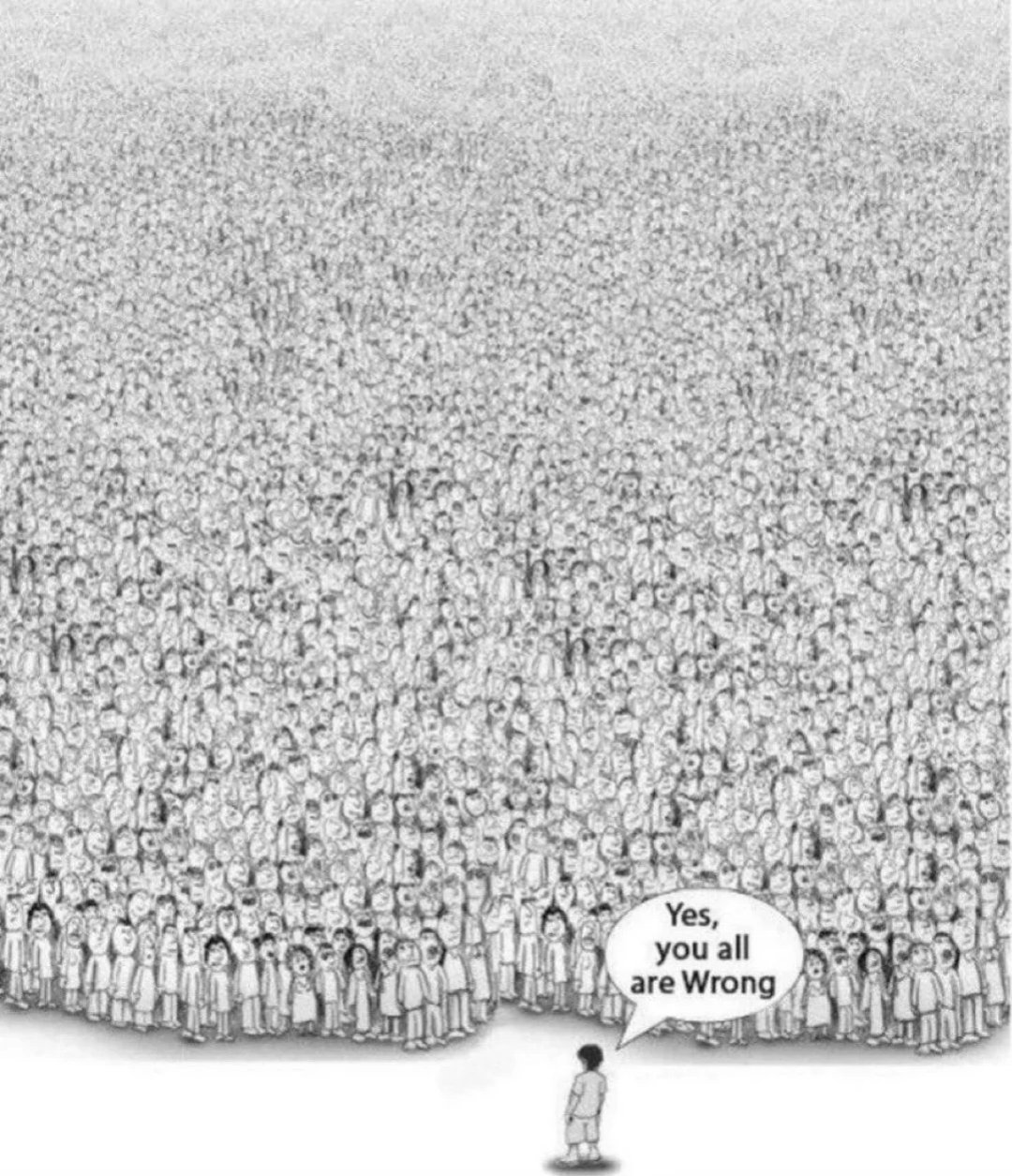this post was submitted on 07 Dec 2023
530 points (87.4% liked)
Asklemmy
48479 readers
868 users here now
A loosely moderated place to ask open-ended questions
If your post meets the following criteria, it's welcome here!
- Open-ended question
- Not offensive: at this point, we do not have the bandwidth to moderate overtly political discussions. Assume best intent and be excellent to each other.
- Not regarding using or support for Lemmy: context, see the list of support communities and tools for finding communities below
- Not ad nauseam inducing: please make sure it is a question that would be new to most members
- An actual topic of discussion
Looking for support?
Looking for a community?
- Lemmyverse: community search
- sub.rehab: maps old subreddits to fediverse options, marks official as such
- [email protected]: a community for finding communities
~Icon~ ~by~ ~@Double_[email protected]~
founded 6 years ago
MODERATORS
you are viewing a single comment's thread
view the rest of the comments
view the rest of the comments

The metric system should be redone in base 12, and RPN should be the norm for teaching arithmetic.
Why base 12?
See elsewhere in the thread, but basically because of the ease of dividing whole numbers.
twelve phalanges makes four digits, use the thumb to count. Also prettier.
I've been fully on board with base 12 for years. Didn't know about RPN until this post. I'm convinced.
Base 16 is superior and once you learn binary math, easier to divide and multiply.
What base 12 gives you is a lot of common divisors: 2, 3, 4, and 6. Base 10 only has 2 and 5. Base 16 only has 2, 4, 8.
The practical upshot of this is that you can divide things evenly in more ways. Particularly when wanting to divide a board into thirds. Having 12 inches to a foot is actually helpful there, though it falls apart as soon as you get larger.
Base 16 is great when you're interacting with a computer, but aside from that, not much. Only being divisible by 2 is kind of a pain in the real world.
This is incorrect, and you don't understand why base 12 is useful. However for binary operations, hex is great. But not for general counting.
I'm not experienced with RPN but at a glance think there's a solid argument for it.
Both are easily countable on fingers using your thumb and counting up the segments for base 12 and adding the pads for base sixteen. You can reasonably count to 144(gross) or 256 using both hands to create a two digit dozenal or hexadecimal number.
Good points, 12 seems to be superior and I've changed my opinion.
You would have numbers 0-9 plus two more digits (could use A and B, but any two symbols will do). The advantage is being able to cut things in thirds and quarters as well as in half. Cutting by a sixth is a bonus, as well.
RPN (reverse polish notation) is a different way of doing arithmetic where the order you write it naturally determines the order of operations. Do you know those Facebook memes where people get different answers for seemingly simple math equations? RPN does away with that. There is one and only one right way to interpret an RPN equation, and you don't have to remember any order of operation rules to do it.
Here's a practical explanation of RPN.
Take the simple expression
1 + 1. The plus sign is between the two operands; this is called infix notation and it's what you're probably familiar with. If we wanted to make this more complex, e.g.1+(2*3), we'd need parentheses to say which part was supposed to be done first.Reverse Polish Notation (RPN) means you write the two operands and then the operator, i.e.
1 1 +. Writing more complex equations is as simple as putting another expression in place of one of the numbers:1 2 3 * +. To see how you'd evaluate this without any parentheses, imagine that as you go through an RPN expression from left to right, you keep a stack of sheets of paper, each with a number written on it, that starts out empty. As you go through, you see:If we wanted to rewrite that expression to be (1+2)*3 instead, we could write:
1 2 + 3 *Simply by reordering the symbols, we change the meaning of the expression, so there's never any need for parentheses.
As a bonus, this method of writing equations is a lot easier for computers to parse than infix notation, since they think in terms of stacks anyway. They can be (and often are) programmed to parse infix notation anyway, because infix notation is a lot easier for humans to wrap their brains around, but it's much easier to program them to interpret RPN which is why a lot of older calculators and software (like the programming language FORTH) use RPN exclusively.
Let me know if that explanation made sense.
RPN is a gateway to LISP
If we were supposed to use base 10, we’d have 10 figures and 10 toes!
/s
You have 12 finger joints which you can count with the thumb.
I have 2 balls so binary is more in line with my interests.
Yes. Also everyone should be required to learn how to use a slide rule before they ever get given a calculator - I think that seeing how the numbers relate to each other on a physical device can help students conceptualize them better.
You'd need to move all numbers to base 12 too for it to be worth it.
Well, let's get on that, and get some CRISPR stuff going so people grow an extra finger on each hand. Stupid evolution, we have to fix so many mistakes.
woah RPN is awesome
Yes, BIPM, this user here.